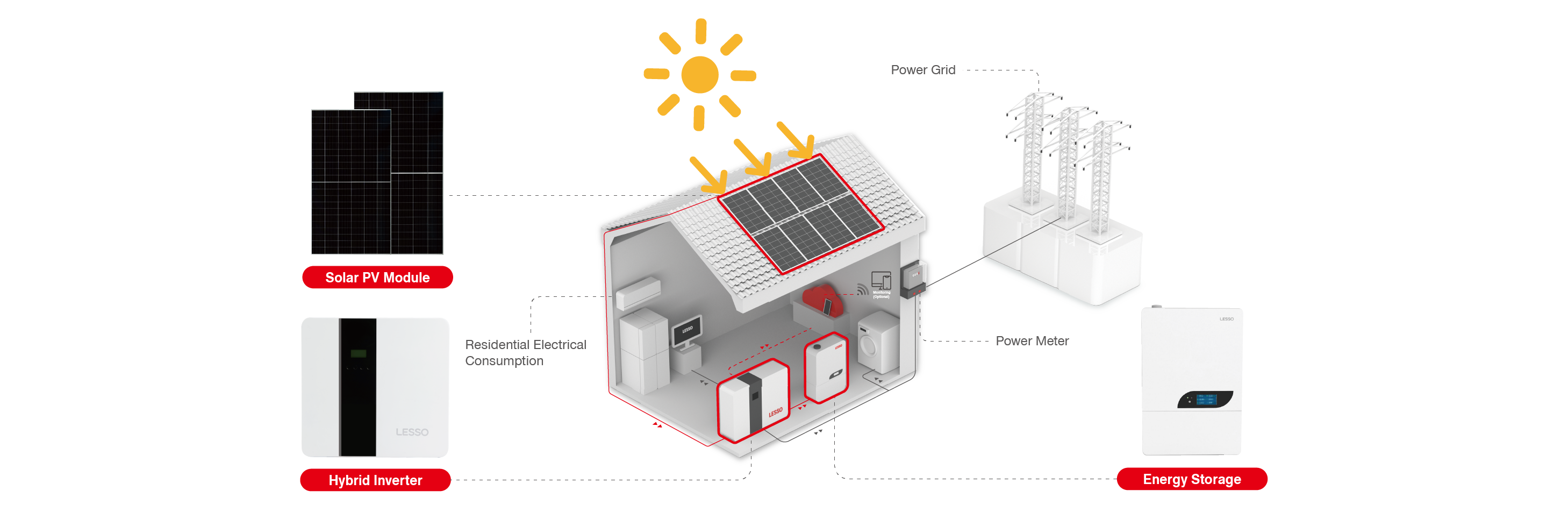1. What is ESS? A Look at the Energy Storage System
Energy storage is the process of changing energy into a form that can exist in nature more reliably and then keeping it in a way that makes it available when it is needed. When energy is being created, changed, moved, and used, there are often differences between supply and demand in terms of amount, shape, spread, and time. Using energy storage technology to store and release energy can even out these differences. This will make energy supply and demand more equal and boost energy efficiency. Mechanical energy, heat energy, chemical energy, radiation (light) energy, electromagnetic energy, nuclear energy, and other types of energy can be put into different groups. In addition to radiant energy, all other types of energy can be stored in standard forms. For example, mechanical energy can be stored as kinetic or potential energy, electrical energy can be stored as induced field energy or electrostatic field energy, thermal energy can be stored as latent heat or sensible heat, and nuclear energy is a pure form of energy storage. Among the different ways to store energy are pumped storage, compressed air storage, flywheel storage, battery storage, thermal storage, and hydrogen storage.
At the moment, batteries are more commonly used to store energy in microgrids because they are mature goods with a lot of working experience. There are several parts in battery energy storage system, mainly including the energy storage battery pack, the battery management system (BMS), the step-up transformer, the energy storage bi-directional converter device (PCS), the energy storage tracking system, and some other parts. When the grid goes down, the energy storage system can be switched from being connected to the grid to working without the grid. It then acts as a backup power source for the whole microgrid system, keeping the voltage and current stable when it's not connected to the grid.

2. Choosing an energy storage battery
2.1 Battery with lead carbon
Lead-carbon battery is a new kind of energy storage device made by adding carbon materials with capacitive qualities to the negative electrode of a regular lead-acid battery. This can be done either "internally and" or "internally mixed." Lead-carbon batteries are like both regular lead-acid batteries and super capacitors. They can make regular lead-acid batteries work much better in many ways, and these are some of their scientific benefits:
1. high charging multiplier;
2. cycle life is 4-5 times that of regular lead-acid batteries;
3. good safety;
4. high regeneration utilisation (up to 97%), much higher than that of other chemical batteries; lots of raw materials, low cost, 1.5 times that of regular lead-acid batteries; and the cost of regular lead-acid batteries is about 1.5 times that of these batteries. 1.5 times stronger than a regular lead-acid battery.

The performance of lead-carbon batteries has greatly improved compared to traditional lead-acid batteries. However, it is still not clear what role the key carbon material plays in improving the performance of lead-carbon batteries. Adding carbon materials can have negative effects, such as the negative electrode precipitating hydrogen and the battery losing water, so this is an issue that needs to be addressed.
2.2 Lithium battery
In the proccess of charging and discharging, lithium-ion batteries use chemicals that contain lithium as the positive anode. There is no lithium metal in lithium-ion batteries.
Lithium-ion batteries have a positive electrode made of lithium-containing compounds, like lithium cobaltate (LiCoO2), lithium manganate (LiMn2O4), lithium iron phosphate (LiFePO4), and other two- or three-part materials. The negative electrode is made of lithium-carbon interlayer compounds, like graphite, soft carbon, hard carbon, and lithium titanate.
Lithium-ion batteries have two outstanding advantages, one is high energy storage density, the other is power density. Other benefits include high efficiency, a wide range of uses, a lot of attention, fast scientific progress, and a lot of room for growth. ① Because chemical electrolytes are used, there are big safety risks; safety needs to be better.
2.3 Choosing an energy storage battery
A look at the differences between these two types of energy storage batteries in terms of how deeply they can be discharged, the temperature range they can work in, and their cycle life.
The above table shows that lead-carbon batteries have a short cycle life and release hydrogen, which is dangerous. Lithium iron phosphate batteries, on the other hand, can work in a range of temperatures and have a high cycle life, energy transfer efficiency, and energy density.
For this reason, lithium iron phosphate storage batteries are the best choice for most energy storage projects.







